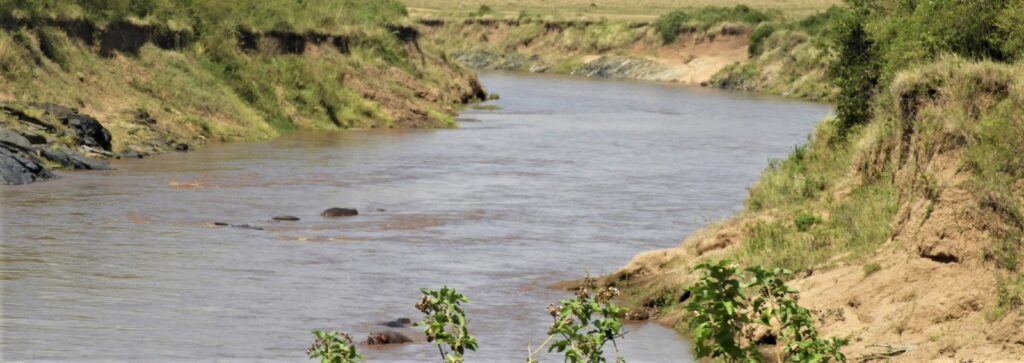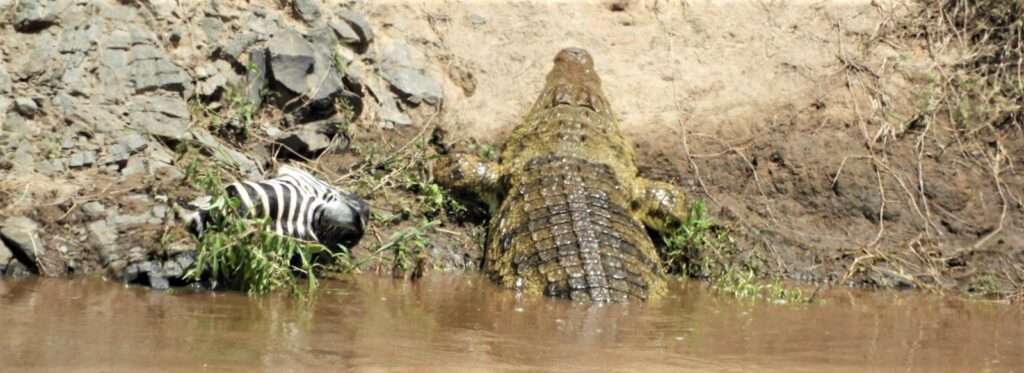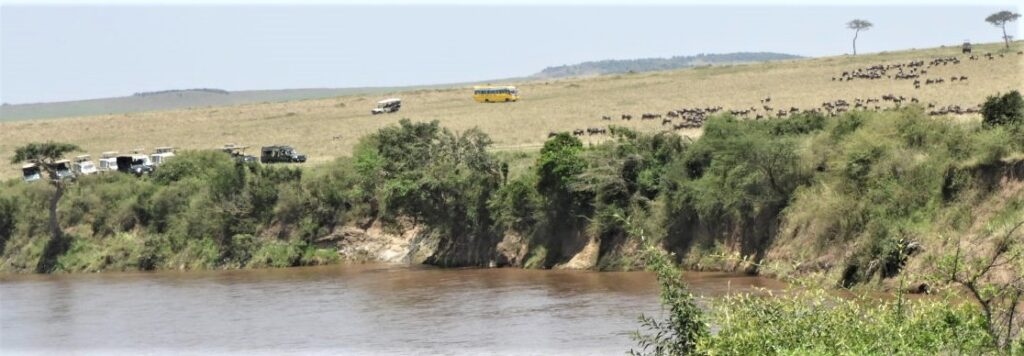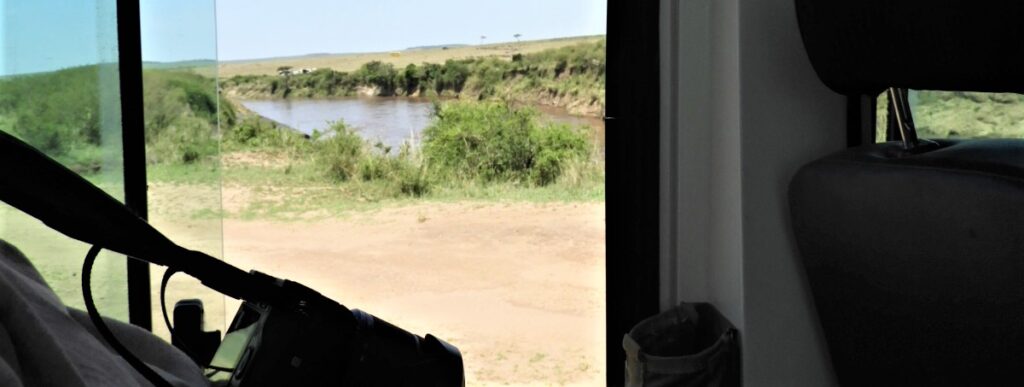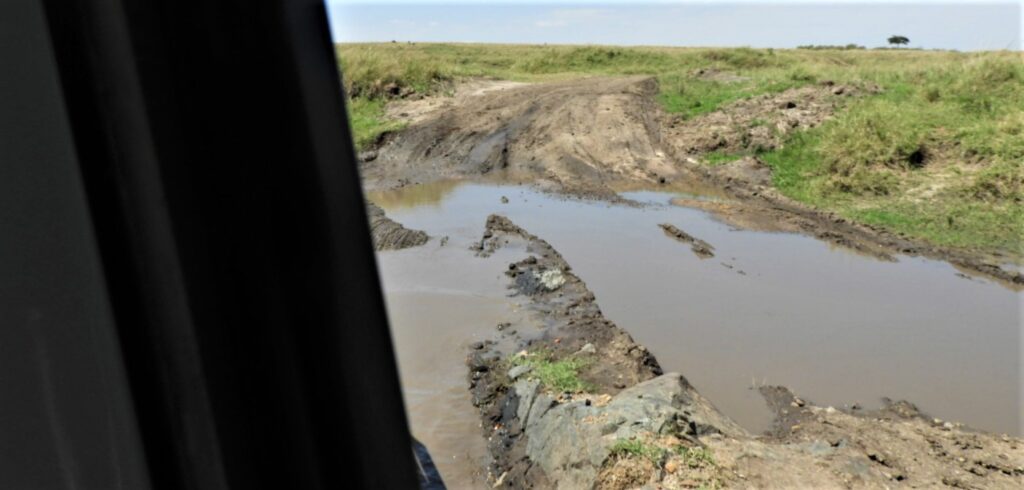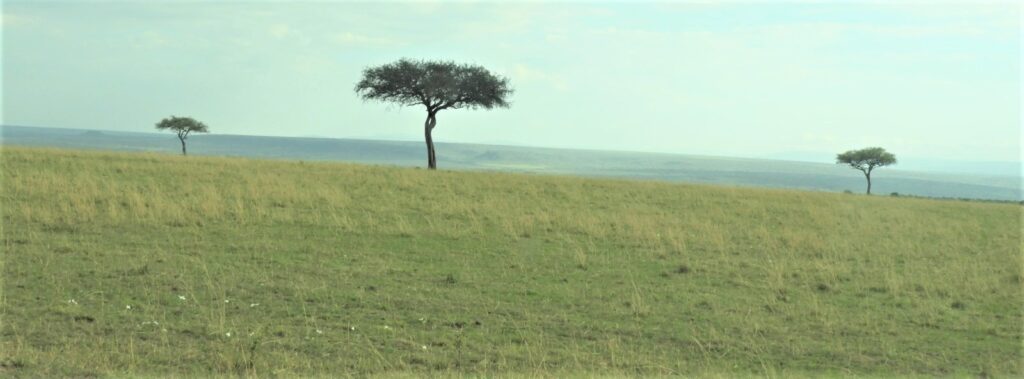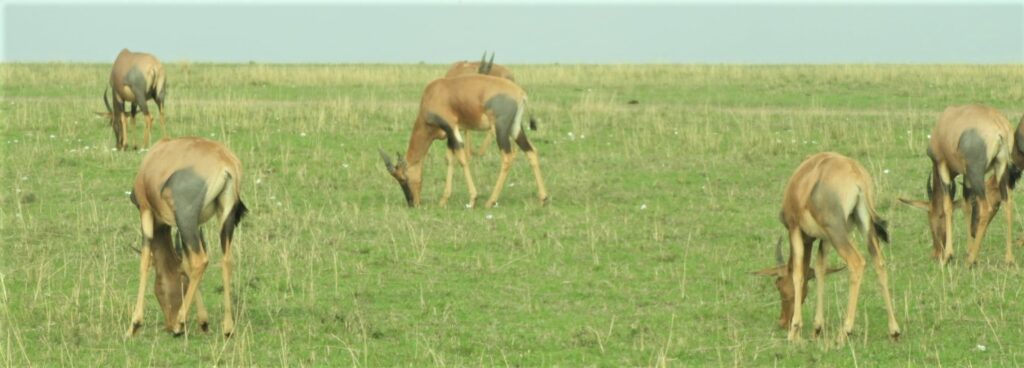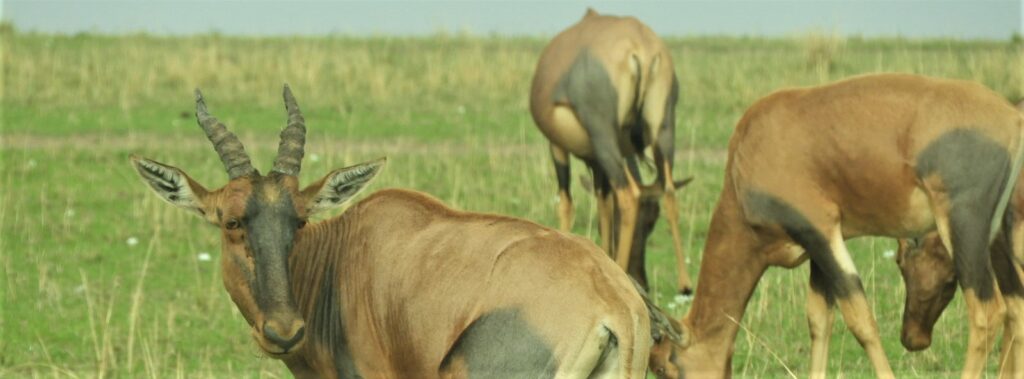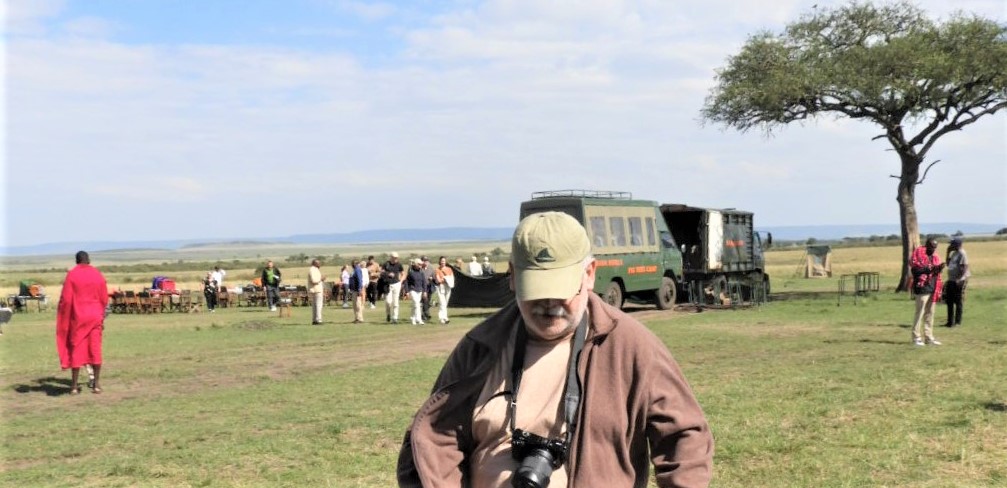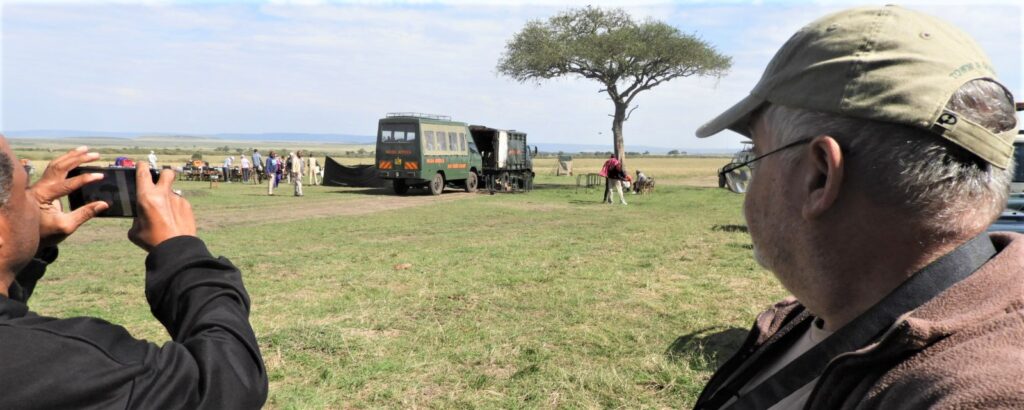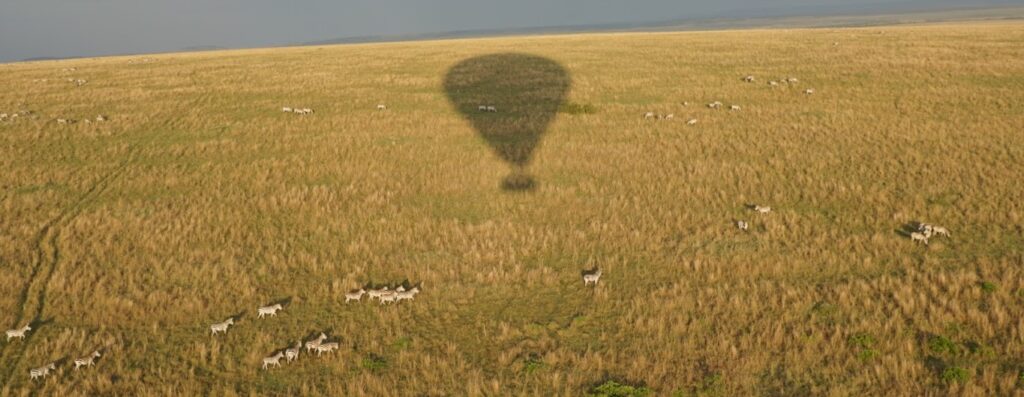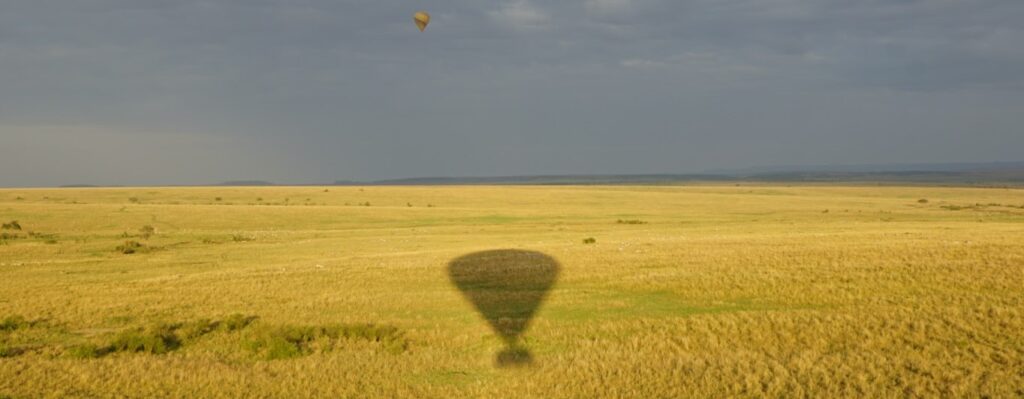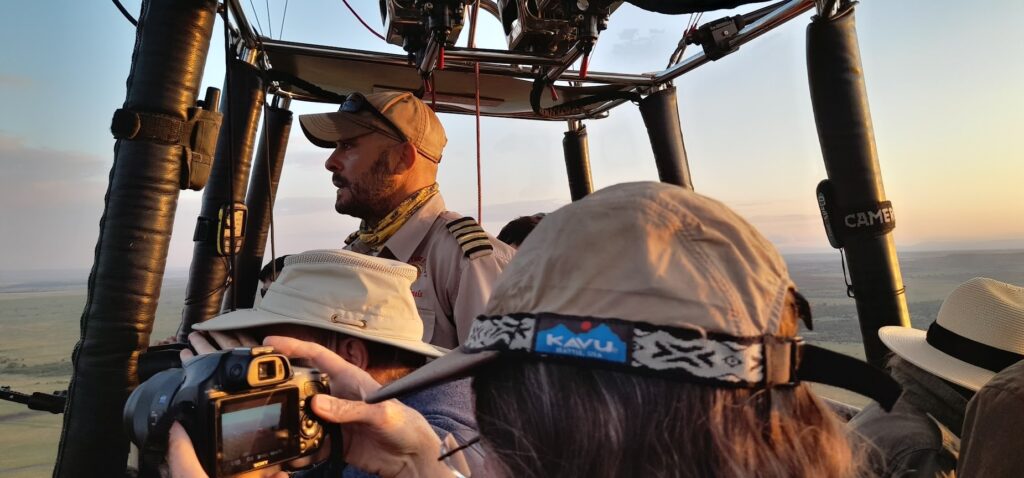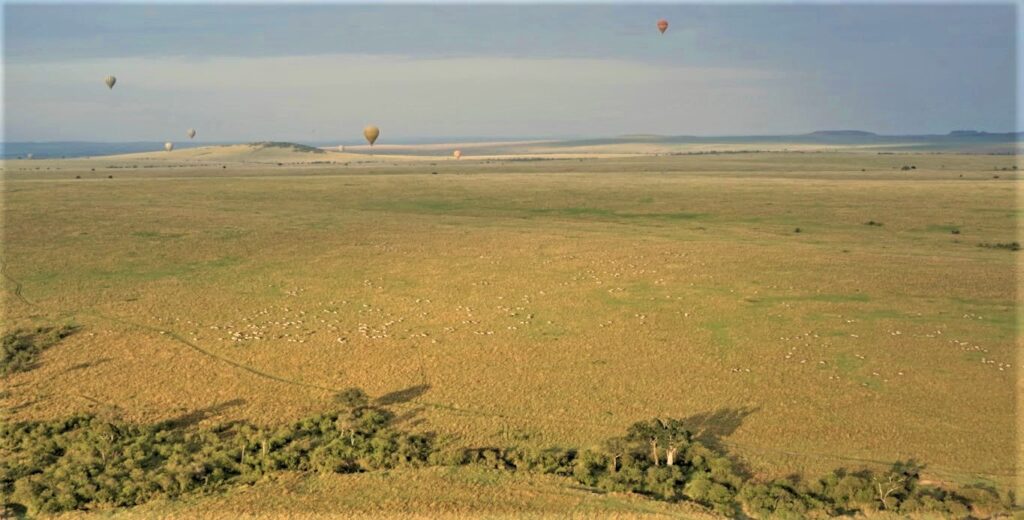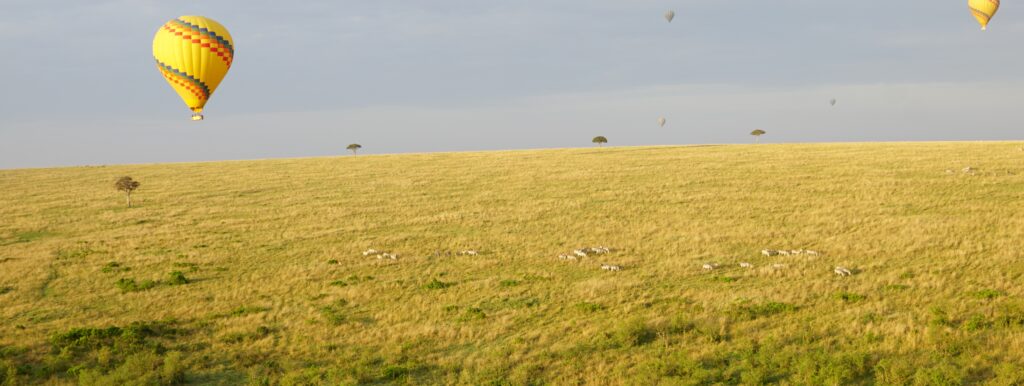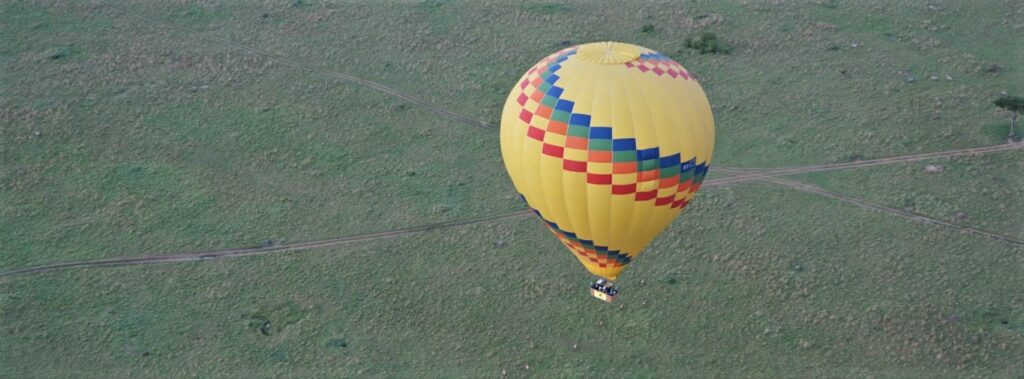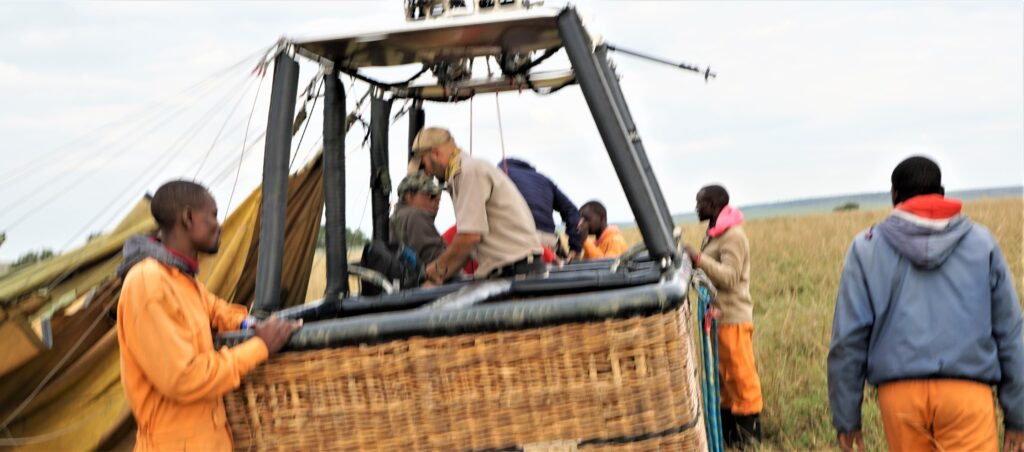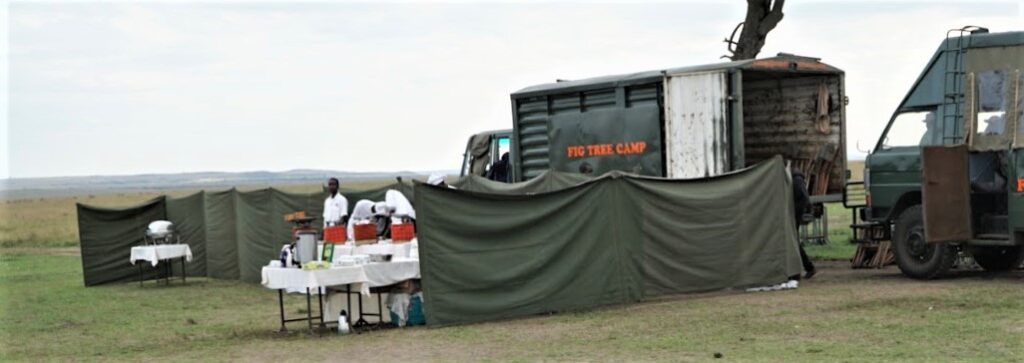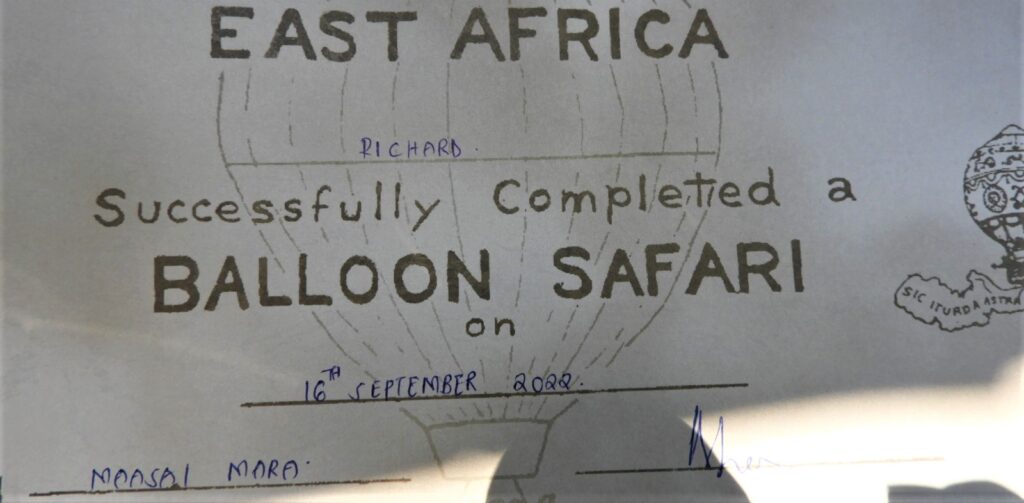Archive for September 16th, 2022
» posted on Friday, September 16th, 2022 by Linda Lou Burton
Crossing The Mara
Linda Lou Burton posting from Sarova Mara Game Camp, Maasai Mara National Reserve, Kenya– The Great Migration, ah, that rousing event that sometimes results in more blood  and gore than even the Coen Brothers could think up. Or, it could wind up as cozy as a Sunday morning sleep-in, as we witnessed. We did see a crocodile-in-waiting, and a line of wildebeests stretching as far over the horizon as the eye can see. This photo I grabbed off the net shows what could, and often DOES, happen when a wildebeest tries to cross the Mara River, as below.
and gore than even the Coen Brothers could think up. Or, it could wind up as cozy as a Sunday morning sleep-in, as we witnessed. We did see a crocodile-in-waiting, and a line of wildebeests stretching as far over the horizon as the eye can see. This photo I grabbed off the net shows what could, and often DOES, happen when a wildebeest tries to cross the Mara River, as below.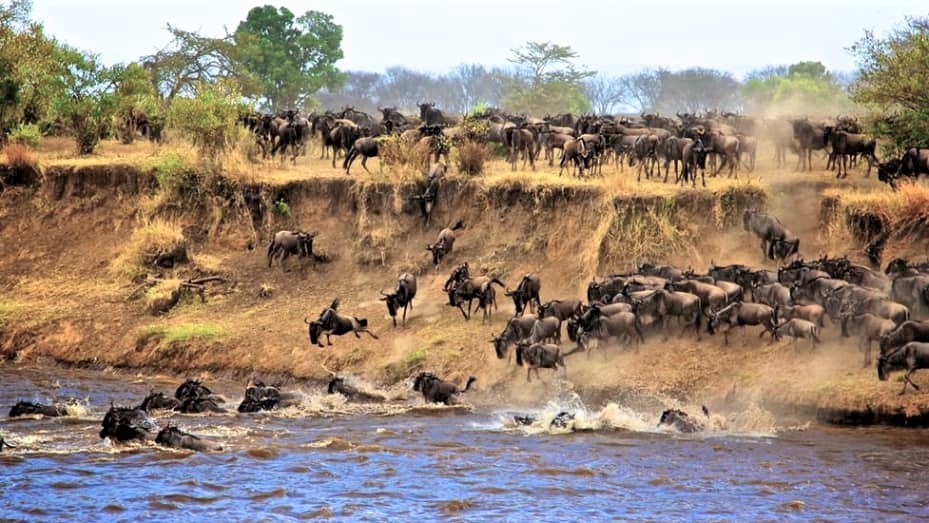
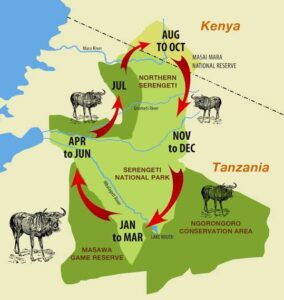 Why cross the Mara River? It begins with the weather. The weather creates rainy seasons and dry seasons. The rainy seasons are when the grasses grow. Over a million wildebeest eat a lot of grass. So do half a million zebras, and half a million eland and gazelles. When the grass is gone in one place, they move to a greener pasture. All this occurs in a regular pattern over a year’s time, as the grazers move in a clockwise direction from Tanzania’s Serengeti National Park across the border to the north to Kenya’s Maasai Mara and then back south again. As you can see on this map, they have to cross the Mara River twice to do that! And thousands of Nile crocodiles live in that river, just waiting for lunch to arrive. Which means people line up along the riverbanks to see what might happen. Will the wildebeests cross today while we’re here? What are they waiting for? Is there a leader, giving a signal? What causes the first one to start running, and what causes the others to follow in a spectacular frenzy of rolling and tumbling and jumping and swimming?
Why cross the Mara River? It begins with the weather. The weather creates rainy seasons and dry seasons. The rainy seasons are when the grasses grow. Over a million wildebeest eat a lot of grass. So do half a million zebras, and half a million eland and gazelles. When the grass is gone in one place, they move to a greener pasture. All this occurs in a regular pattern over a year’s time, as the grazers move in a clockwise direction from Tanzania’s Serengeti National Park across the border to the north to Kenya’s Maasai Mara and then back south again. As you can see on this map, they have to cross the Mara River twice to do that! And thousands of Nile crocodiles live in that river, just waiting for lunch to arrive. Which means people line up along the riverbanks to see what might happen. Will the wildebeests cross today while we’re here? What are they waiting for? Is there a leader, giving a signal? What causes the first one to start running, and what causes the others to follow in a spectacular frenzy of rolling and tumbling and jumping and swimming?
All a mystery, but Daniel did his part so we could see everything there was to see; shifting our 4×4 this way and that, around the 30 or so others waiting on our side of the river; all jockeying for position. And which WAS the best position? There were several possible crossing points. The other side of the river was lined with 4x4s too, and school buses, yes, this is a school-trip-worthy event. The zebras graze nervously as we wait; the giraffe stand high, peering, maybe counting the numbers of wildebeests in the line? Otis spotted a crocodile waiting on the riverbank. “It’s THERE!” he said, over and over, “by the zebra’s head!” My camera zoom finally caught it. Yep, zebra head by crocodile head. We waited. And we waited. And we waited. The hippos weren’t afraid, swimming the Mara with little hippo eyes just at the surface; stretching out on the bank in a muddle of hippo fat. And smiling, I swear!
We didn’t pack a lunch, so Abdi finally called TIME. He had an obligation to keep us fed, and it was a long drive back to Sarova’s dining room. “Sorry, we have to leave,” he said. Aww, shucks. Daniel made sure we had our own “crossing” thrill however, bless his heart. “Hold on!” he yelled, as he 4×4’ed us across a Mara mudhole. Then we passed a group of wildebeests that had already made it across, grazing in their greener pastures. A good morning, all told.
Note: During the migration about 250,000 wildebeest and 30,000 zebra die every year as a result of predation by carnivores, drowning, thirst, hunger, and exhaustion. An average of 6,250 animals drown or are trampled crossing the Mara River.
A Brighter Note: As many as 500,000 wildebeest are born between February and March each year as the rainy season begins. Approximately 8,000 young wildebeest are born every single day during the peak of the birthing season.
» posted on Friday, September 16th, 2022 by Linda Lou Burton
Room to Roam
Linda Lou Burton posting from Sarova Mara Game Camp, Maasai Mara National Reserve, Kenya– Porridge. “It’s what we eat for breakfast in Kenya,” Abdi assured Judy. “It’s good for the digestion.” Judy decided to try it too, a big bowl of the brownish stuff. “I like it,” she proclaimed. “Not too heavy for a morning start.” I had some fruit and yogurt, feeling pretty 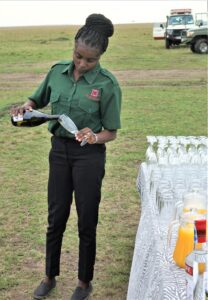 health conscious myself. Meanwhile Rick was enjoying a Full English Breakfast “in the bush,” meaning, outdoors, with a sweeping view of the world around. AND, all the sausages and eggs and buttery biscuits that the British ate in the olden days when out on safari. Tea available, of course, but champagne if you’ve just completed a balloon ride. The rest of us were gathering at our Sarova table INDOORS, showing up one by one, sleepy headed, but eager to climb into our 4x4s and get out on the Mara. First stop: to pick up Rick.
health conscious myself. Meanwhile Rick was enjoying a Full English Breakfast “in the bush,” meaning, outdoors, with a sweeping view of the world around. AND, all the sausages and eggs and buttery biscuits that the British ate in the olden days when out on safari. Tea available, of course, but champagne if you’ve just completed a balloon ride. The rest of us were gathering at our Sarova table INDOORS, showing up one by one, sleepy headed, but eager to climb into our 4x4s and get out on the Mara. First stop: to pick up Rick.
The Maasai Mara National Reserve is called The World Cup of Wildlife; it is home to Kenya’s highest concentrations of “the Big 5” (remember, buffalo, elephant, lion, leopard, rhinoceros) and the Big Cats (cheetah, leopard, lion). With plenty of room to roam for all of the above. What would we spot in the next hour? The ROOM caught my attention first – so much air, and sky, and space, and, I say it again, space. We were on the ground, not in a balloon, and yet, amazed at all the THERE out there! Do the animals realize, I thought to myself, just how fortunate they are? It took us an hour to get to the Balloon Safari’s breakfast spot, where Rick awaited; take a look at what I saw on the way. Note my first sighting of the big hairy wildebeest. Imagine millions of them! The story of The Great Migration I’ll tell you next post – it’s the greatest draw to the Maasai Mara — both in animals, and in tourists.
» posted on Friday, September 16th, 2022 by Linda Lou Burton
Balloons Over Africa
Linda Lou Burton posting from Sarova Mara Game Camp, Maasai Mara National Reserve, Kenya– This post isn’t mine. I’m posting on behalf of son Rick Shumate, who was brave enough, and hardy enough, to get up early enough for a 4:30 AM pickup this morning. He wanted to watch the sun rise over the Maasai Mara from a hot air balloon, floating high in the sky. Oh, did I say brave? Well, look at his face, head on the ground, instead of high in the sky. What the dickens? 
“I thought I’d just climb into the basket,” he reported later. “But they turn the basket onto its side and then you get down on the ground and slide your butt into the seat. I was making that face for fun.” “Right,” I replied, rolling my eyes.
Seriously though, bravery is not my strong suit when it comes to heights. So thank you Rick, for bringing us these gorgeous images of a morning over the Maasai Mara, from sunrise to champagne, and everything between. You show us Tanzania, just across the border. You show us the Mara River and the back-country roads twisting and turning across the plains. You show us zebras running and shadows changing and balloons hanging in the air. You show us what a person can see, when they get up early. And float in a balloon. Over Africa.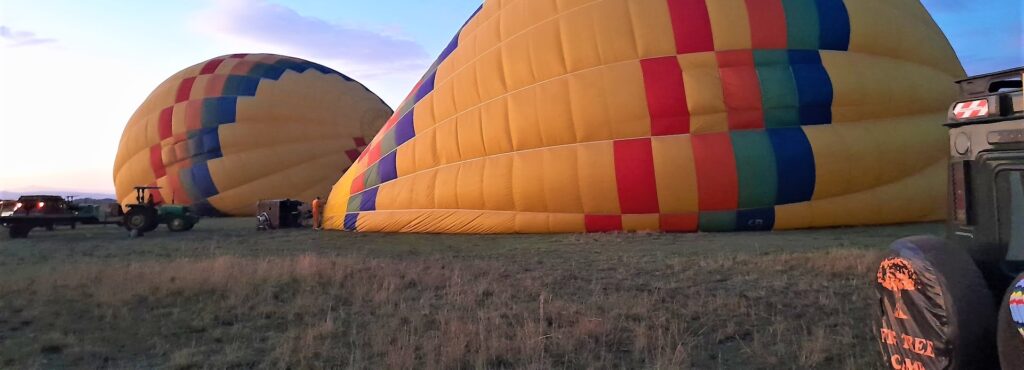
Note: Most of Rick’s footage was video; these are some of his best stills. He claimed it was nothing short of fantastic. “We didn’t see that many animals,” he said. “But that didn’t matter. All that open sky and open space and watching our shadow moving along the ground below – awesome! I’m so glad I took the trip!”
Fig Tree Camp Balloon Safari https://aaballoonsafari.com/balloon-safari-maasai-mara/


